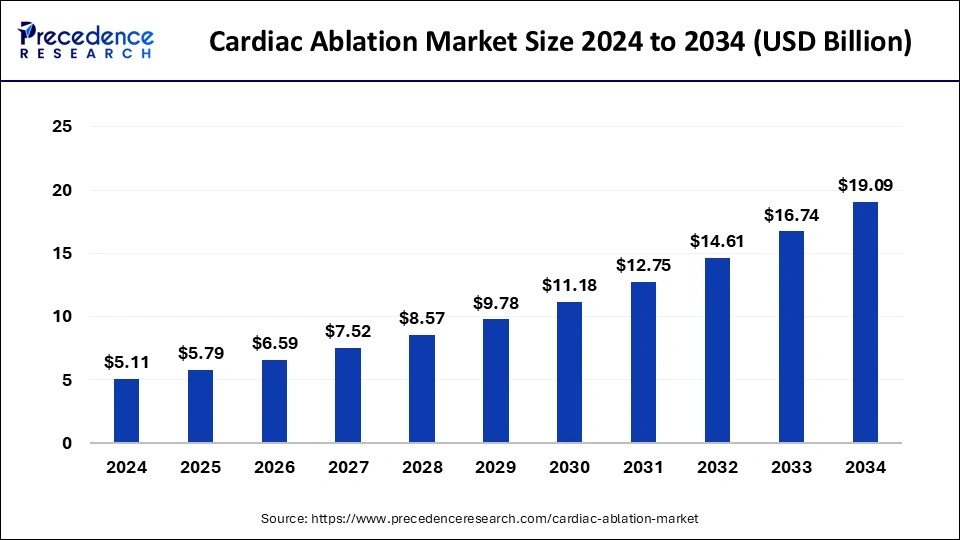Key Takeaways
- North America led the global market with the highest market share of 38% in 2023.
- Europe is expected to witness significant growth during the forecast period.
- By product, the electrical ablators segment is projected to show significant growth during the forecast period.
- By approach, the catheter-based segment dominated the market in 2023 and is expected to maintain its dominance throughout the forecast period.
- By approach, the open/surgical segment is expected to show significant growth over the forecast period.
- By application, the atrial fibrillation & flutter segment dominated the market in 2023 and is expected to maintain its dominance throughout the forecast period.
- By application, the tachycardia segment will show notable growth in the cardiac ablation market.
- By end use, the ambulatory surgical centers segment is projected to witness considerable growth in the upcoming years.
The cardiac ablation market is a dynamic sector within the healthcare industry, primarily focused on treating cardiac arrhythmias. Cardiac ablation procedures involve the use of catheters to deliver energy to the heart tissue, creating lesions that disrupt abnormal electrical pathways causing irregular heart rhythms. This minimally invasive approach has gained significant traction as an alternative to anti-arrhythmic drugs and traditional surgical interventions. The market encompasses various ablation techniques, including radiofrequency ablation, cryoablation, and ultrasound-based ablation, catering to a diverse range of patient needs and clinical scenarios.
Growth Factors:
Several factors contribute to the growth of the cardiac ablation market. Firstly, the rising prevalence of cardiac arrhythmias, fueled by an aging population and the increasing prevalence of lifestyle-related risk factors such as obesity and hypertension, is driving the demand for effective treatment options. Additionally, technological advancements in ablation catheters and imaging modalities have enhanced procedural outcomes and safety profiles, further stimulating market growth. Moreover, the growing adoption of minimally invasive techniques by both patients and physicians, driven by the potential for shorter recovery times and reduced post-operative complications, is expanding the patient pool eligible for cardiac ablation procedures.
Region Insights:
The cardiac ablation market exhibits regional variations influenced by factors such as healthcare infrastructure, regulatory environments, and reimbursement policies. North America holds a significant share of the market, driven by high healthcare expenditure, advanced healthcare facilities, and a robust regulatory framework encouraging innovation. Europe follows closely, characterized by a growing prevalence of cardiovascular diseases and increasing adoption of minimally invasive procedures. Emerging economies in Asia-Pacific, including China and India, present lucrative opportunities for market expansion, attributed to improving healthcare infrastructure, rising disposable incomes, and a growing awareness of cardiac health.
Drivers:
Several key drivers propel the growth of the cardiac ablation market. Technological innovations, such as the development of advanced mapping systems and energy delivery platforms, enable more precise and effective ablation procedures, fostering market growth. Moreover, the escalating burden of cardiac arrhythmias worldwide, coupled with the limitations of pharmacological therapies, underscores the need for alternative treatment modalities like cardiac ablation. Additionally, the growing trend towards value-based healthcare and the emphasis on reducing hospital readmissions are incentivizing the adoption of minimally invasive procedures, driving demand for cardiac ablation techniques.
Opportunities:
The cardiac ablation market presents numerous opportunities for market players to capitalize on. Expanding indications for cardiac ablation beyond traditional arrhythmias, such as atrial fibrillation and ventricular tachycardia, offer avenues for diversification and market expansion. Furthermore, increasing collaborations between medical device manufacturers and healthcare providers to develop innovative ablation technologies tailored to specific patient populations can unlock new growth opportunities. Moreover, the integration of artificial intelligence and machine learning algorithms into ablation systems holds promise for enhancing procedural precision and optimizing patient outcomes, presenting avenues for technological innovation and market differentiation.
Challenges:
Despite the promising growth prospects, the cardiac ablation market faces several challenges that warrant attention. One of the primary challenges is the complexity and variability of cardiac arrhythmias, which can complicate treatment planning and procedural outcomes. Additionally, the high cost associated with cardiac ablation procedures, including equipment procurement and healthcare facility charges, poses a barrier to widespread adoption, particularly in emerging economies with limited healthcare resources. Furthermore, concerns regarding the long-term efficacy and safety of ablation procedures, as well as the potential for procedural complications such as vascular injury and cardiac perforation, necessitate ongoing research and development efforts to address these challenges and improve patient outcomes.



0 Comments